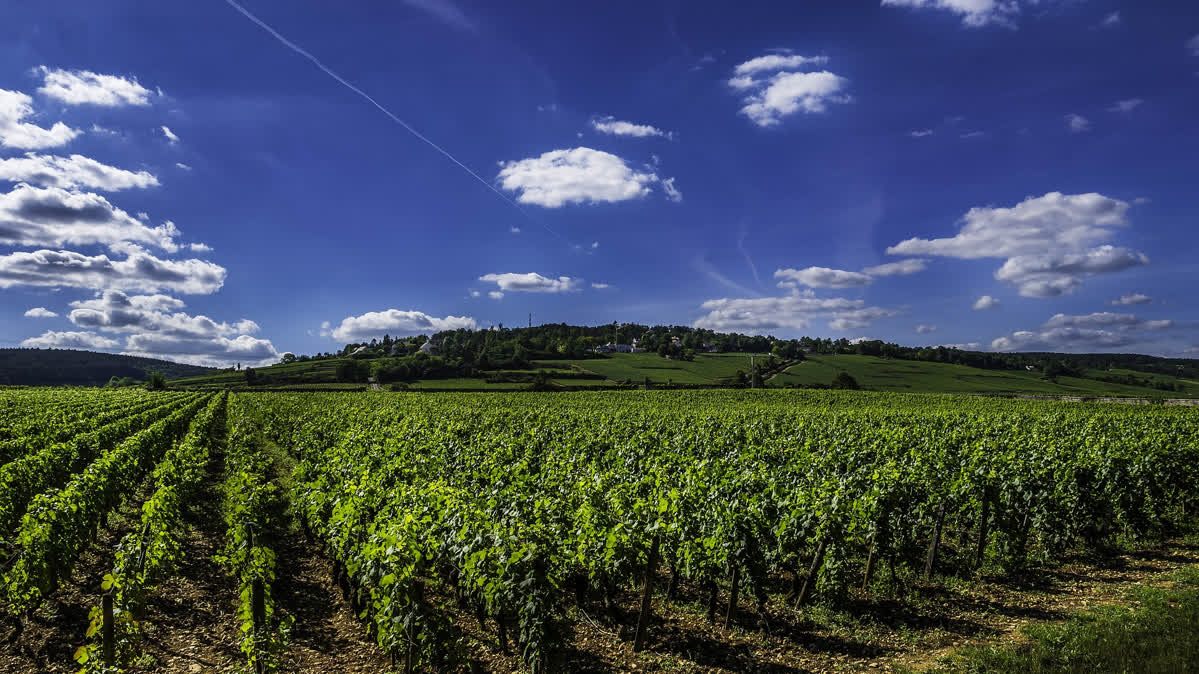Home
Wine offers a fascinating variety of aromas and characters, shaped by regions of cultivation, grape varieties, and production methods.

Wine is more than just a drink. Every bottle tells a story—from the vines and the soil to the hands that harvested them. Let's dive into the world of wines and discover the diversity of red wines, white wines, and rosé wines. We'll explore the growing regions, grape varieties, and regions that shape the character of these wines.
Red Wines: Profound and Complex
Red wines are known for their deep aromas and robust flavour profiles. They are made from dark grapes, whose skins and seeds remain in contact with the juice during fermentation. This not only gives them their characteristic colour but also tannins, which are responsible for structure and aging potential.
Renowned grape varieties for red wines include Cabernet Sauvignon, Merlot, Pinot Noir, and Syrah. Cabernet Sauvignon is globally widespread and is characterized by strong tannins and aromas of blackcurrants. Merlot is softer and fruitier, often with notes of plums and chocolate. Pinot Noir, a demanding grape variety, offers fine aromas of cherries and strawberries, often with a hint of spices. Syrah, also known as Shiraz, impresses with strong, peppery notes and dark fruits.
White Wines: Fresh and Versatile
White wines are made from white grapes, with the skins quickly separated from the juice to retain the light colour. They offer a wide range of aromas, from crisp citrus fruits to rich, buttery notes.
Chardonnay, Sauvignon Blanc, Riesling, and Pinot Grigio are some of the most popular white wine varieties. Chardonnay is known for its versatility and can produce both light, fresh wines and heavy, oaky wines. Sauvignon Blanc captivates with intense aromas of green apples, gooseberries, and sometimes a grassy note. Riesling offers a balance of sweetness and acidity, often with aromas of peaches, apricots, and honey. Pinot Grigio, also known as Pinot Gris, is light and fresh, with aromas of pears and apples.
Rosé Wines: Fruity and Refreshing
Rosé wines are produced through a short maceration of the grapes, which gives them their pink colour. They combine the freshness of a white wine with the structure of a red wine and are ideal for warm days.
Popular rosé wines come from regions like Provence in France, known for its dry, elegant rosés. The grape varieties Grenache, Syrah, and Cinsault dominate here. Spanish Rosado, often made from Tempranillo, offers stronger, fruitier aromas. Italian Rosato, especially from Sangiovese grapes, produces fresh, lively wines.
Growing Regions and Areas
Wine-growing regions exist worldwide, but some regions are particularly famous and esteemed. France, Italy, Spain, Germany, and the USA are among the most important wine countries.
France is renowned for its diversity of wine regions. Bordeaux, Burgundy, and Champagne stand for the highest quality. Bordeaux produces top-class red wines, Burgundy is famous for its Pinot Noir and Chardonnay, and Champagne for sparkling wines.
Italy offers a rich wine tradition with regions like Tuscany, Piedmont, and Veneto. Tuscany is the home of Chianti, while Piedmont is known for Barolo and Barbaresco. Veneto offers light, sparkling white wines like Soave.
Spain impresses with regions like Rioja, Ribera del Duero, and Priorat. Rioja produces elegant Tempranillo wines, Ribera del Duero powerful red wines, and Priorat offers deep, complex wines from Garnacha and Cariñena.
Germany is known for its Rieslings, primarily from the Mosel, Rheingau, and Pfalz. These wines are appreciated for their lively acidity and often mineral notes.
In the USA, California is the leading wine-growing region, particularly Napa Valley and Sonoma County. These regions produce world-famous Cabernet Sauvignon and Chardonnay.
Grape Varieties: Diversity and Character
The choice of grape variety significantly determines the character of a wine. Over 10,000 grape varieties exist worldwide, but only a few have international significance.
Cabernet Sauvignon, Merlot, Chardonnay, and Sauvignon Blanc are some of the most commonly grown varieties. Cabernet Sauvignon offers power and structure, while Merlot stands for softness and fruitiness. Chardonnay is versatile, ranging from light to heavy and oaky. Sauvignon Blanc is fresh and aromatic, ideal for summer.
Pinot Noir and Riesling are demanding varieties that require special care in the vineyard and cellar. Pinot Noir is known for its elegance and fine aromas, while Riesling impresses with its balance of sweetness and acidity.
Occasions and Food Pairings
Every wine has its perfect moment. Red wines pair well with hearty dishes such as steak, lamb, and game. A Cabernet Sauvignon complements the flavours of a grilled steak, while a Pinot Noir pairs excellently with duck or pork.
White wines are versatile and go well with a variety of dishes. A Sauvignon Blanc harmonizes well with goat cheese and seafood, while a Chardonnay is ideal for creamy pasta dishes and poultry. Riesling is an excellent choice for Asian dishes and spicy food.
Rosé wines are ideal for light summer dishes such as salads, grilled vegetables, and seafood. They also go wonderfully with tapas and antipasti.
Summary
Wine is a world of its own, full of diversity and enjoyment. Red wines offer depth and complexity, white wines freshness and versatility, and rosé wines fruitiness and refreshment. The choice of grape variety and the region where the wine is grown shape the character of each bottle. Whether robust red wines from Bordeaux, elegant white wines from the Mosel, or refreshing rosés from Provence, every wine has its unique charm and fits special occasions and dishes. Enjoy the diversity and discover your favourite wines.